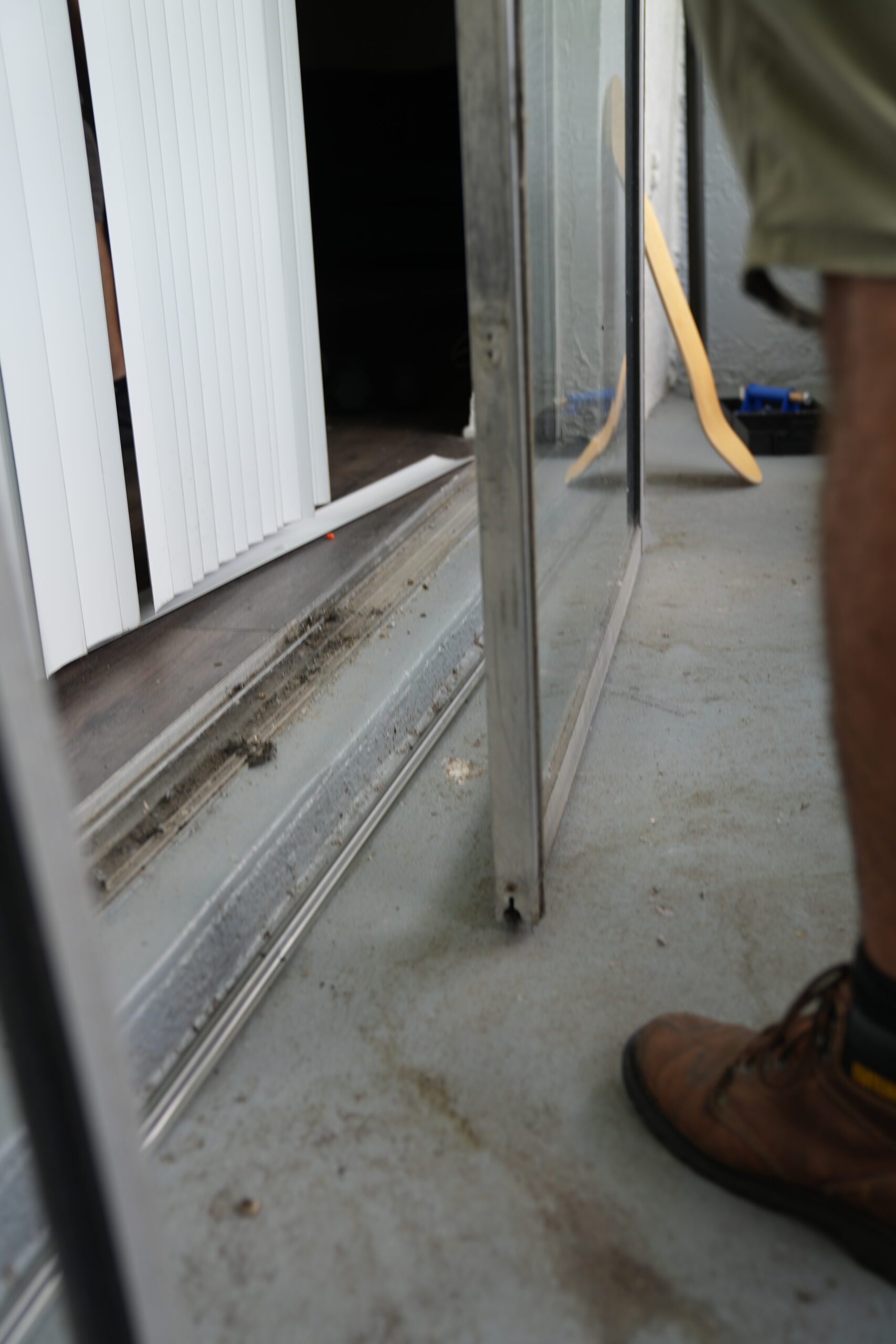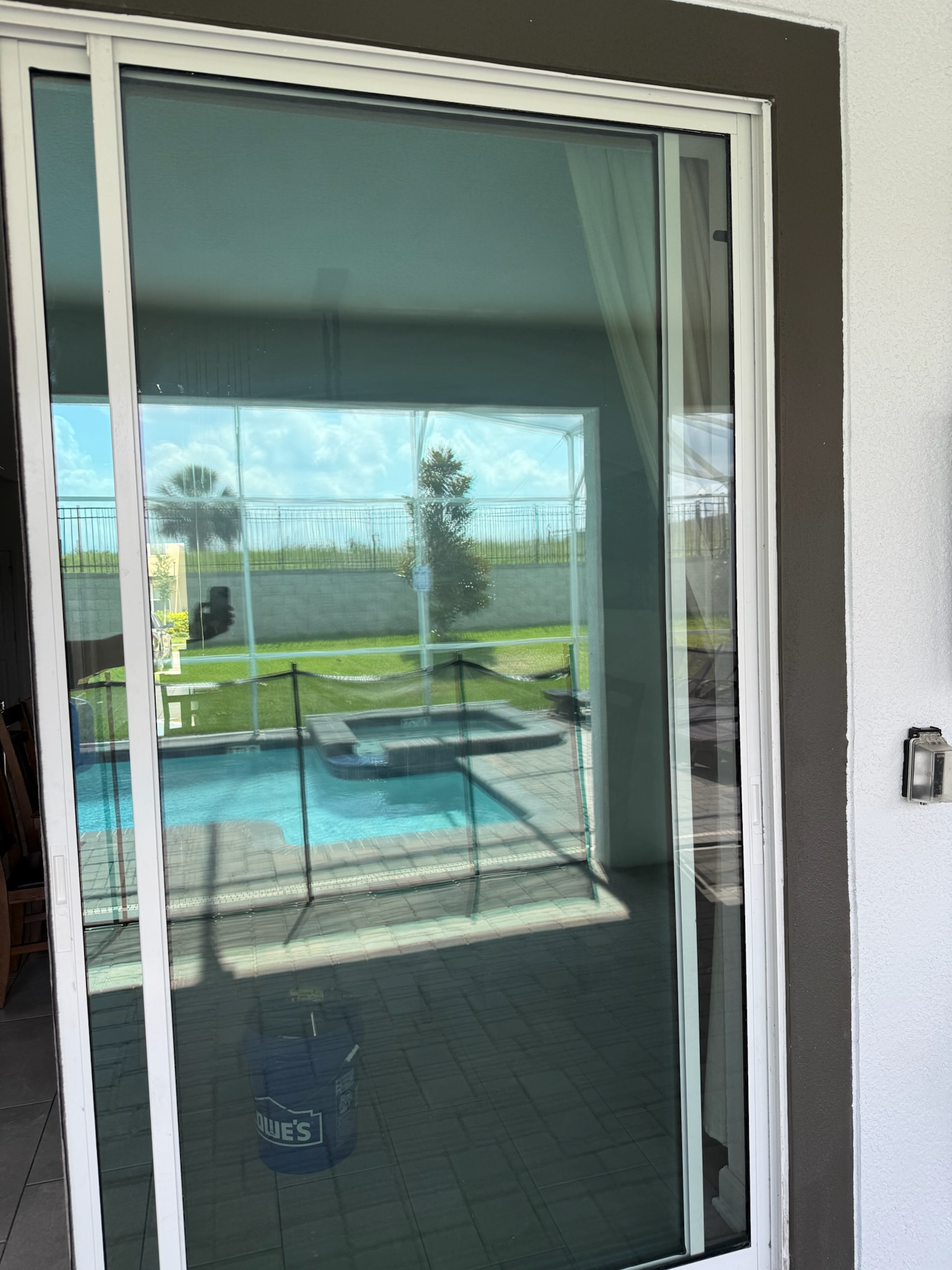
Regular sliding door care delivers measurable cost savings by preventing major repairs, improving energy efficiency, and extending door lifespan. Homeowners often overlook track cleaning, roller lubrication, and seal replacement, actions that typically cost under $100 but stave off repairs that run into the hundreds or even thousands. This article outlines proven maintenance strategies, energy efficiency gains, repair-versus-replace decision criteria, DIY cost-cutting tips, and the value of professional services in Central Florida. You’ll learn:
Armed with this guidance, you can keep sliding doors operating smoothly, lower utility bills, and avoid premature replacement, ultimately putting more money back in your pocket.
Regular sliding door maintenance combines cleaning, lubrication, inspection, and timely fixes to halt small issues before they become expensive repairs. Maintenance encompasses track debris removal, roller servicing, frame alignment checks, and hardware tightening. By addressing wear and tear early, homeowners avoid scenarios requiring complete roller assemblies, track replacement, or costly glass restoration. Preventative maintenance therefore yields significant financial benefits and smoother daily operation, seamlessly transitioning into understanding specific problems maintenance solves.
Regular maintenance, including cleaning and lubrication, prevents small issues from becoming expensive repairs, such as complete roller assembly replacements or track replacements [16]. Preventative maintenance yields significant financial benefits and smoother daily operation.
Routine service tackles several frequent sliding door failures:
Each problem originates from neglect: trapped grit abrades rollers, misaligned panels stress frames, and failing seals invite air infiltration. Fixing these early reduces labor and parts costs exponentially, and the next section explains how core cleaning and lubrication actions achieve this effect.
Cleaning tracks removes abrasive particles that cause roller wear, while lubrication ensures rollers glide with minimal friction.
A clean, lubricated sliding door glides with almost zero resistance, preventing roller deformation and misalignment. This combination stops squeaks, lowers strain on hardware, and directly extends component lifespan, setting the stage for why timely repair is more economical than full replacement.
Timely repair tackles isolated issues (replacing a single roller bearing or patching worn weatherstripping) avoiding the expense of full-frame replacement and new glass panes. When maintenance technicians swap out damaged parts promptly, labor hours are minimal and material costs remain low. Proactive service therefore prevents cascading damage that often forces owners into thousand-dollar door overhauls, underscoring the value of early intervention.

Maintained sliding doors improve home insulation, block drafts, and reduce HVAC strain. Well-sealed doors minimize conditioned air loss, cutting utility expenses over time. Enhanced energy efficiency not only saves money but also elevates interior comfort year-round, naturally leading to specific strategies like weatherstripping replacement.
Replacing weatherstripping restores airtight seals along door perimeters, blocking up to 85% of air leaks around sliding doors. Fresh seals prevent conditioned air from escaping during summer AC operation and keep warmth in during cooler months. As a result, HVAC systems operate less frequently, translating into a 5–15% annual reduction in energy costs without altering thermostat settings.
Replacing weatherstripping restores airtight seals, blocking up to 85% of air leaks around sliding doors, which can reduce energy bills by up to 30% [3, 5]. Fresh seals prevent conditioned air from escaping during summer and keep warmth in during cooler months.
Proper sealing involves inspecting and renewing foam gaskets, vinyl sweeps, and compression seals.
Each sealing component contributes to the door’s overall R-value, and collectively they reduce thermal transfer. Better insulation around sliding doors promotes stable indoor temperatures, complementing broader home energy-saving measures and preparing us for how these improvements lower HVAC burdens.
Sealed and lubricated doors reduce air infiltration and mechanical resistance, causing HVAC systems to cycle less often.
By decreasing HVAC run time by up to 20%, sliding door care converts routine maintenance into tangible savings on monthly utility bills.
Deciding between repair and replacement hinges on cost-benefit analysis, door age, and extent of damage. Minor issues like worn rollers favor repair, whereas structural defects or shattered glass often justify replacement. Making an informed choice ensures you invest wisely and avoid unnecessary expenses, which we’ll illustrate through cost comparisons.
Below is a comparative analysis of common repair actions versus full-door replacement:
| Entity | Attribute | Repair Cost (USD) | Replacement Cost (USD) |
|---|---|---|---|
| Roller Assembly | Labor + Part | 150–250 | 600–1,200 |
| Track Realignment | Service Only | 100–150 | 500–1,000 |
| Weatherstripping | Material + Labor | 50–100 | 400–800 |
| Glass Pane Repair | Pane + Installation | 200–400 | 800–1,500 |
| Full Door System | N/A | N/A | 2,000–5,000 |
Repair costs rarely exceed $400, while replacement ranges from $600 to over $2,000 for components and $2,500–$5,000 for entire systems [13, 15]. Repairing a sliding door is much cheaper than replacing it, with repair costs in the hundreds and replacements in the thousands [21].
Key cues favoring replacement include:
If multiple attributes show irreversible damage, investment in a new, energy-efficient door outweighs recurring repair bills and efficiency losses, setting the stage to understand how routine care extends door longevity when replacement isn’t needed.
Regular cleaning, lubrication, hardware tightening, and seal renewal collectively extend sliding door lifespan by up to 50%. These actions prevent component fatigue, maintain structural integrity, and forestall premature replacement. With professional tune-ups every 12–18 months, doors often last 20–30 years instead of the 10–15 years expected amid neglect.
Regular cleaning, lubrication, and seal renewal can extend a sliding door’s lifespan by up to 50% [4, 6]. With professional tune-ups every 12–18 months, doors often last 20–30 years instead of the 10–15 years expected amid neglect.

Homeowners can perform simple maintenance tasks that cut service calls and parts wear [10, 12]. Basic cleaning and lubrication avert many common issues. Cleaning the tracks and rollers monthly is recommended [2, 12].
For optimal performance, homeowners should:
Essential tools and materials include:
Complex issues requiring expert technicians include:
Professional intervention at stuckdoor.com ensures these advanced repairs use correct parts and techniques, safeguarding door function and compliance with local codes.
Central Florida’s humidity, salt air, and hurricane risks accelerate sliding door wear. Local professionals tailor maintenance to these conditions, providing specialized weatherstripping, corrosion-resistant hardware, and stormproofing that prolong door life and reduce overall costs.
Stuckdoor.com experts provide:
High humidity and coastal salt accelerate metal corrosion and seal degradation. Tropical storms and hurricane season demand robust weatherproofing. Central Florida residents therefore benefit from corrosion-inhibiting lubricants and reinforced seals that hold up under intense moisture and extreme winds.
Expert technicians hold specialized tools and training to diagnose misalignment, source OEM-grade parts, and guarantee precise installations. Their local expertise ensures adherence to regional building codes and proven strategies to combat Florida’s environmental stressors, offering reliable, long-term savings.
Consistent maintenance yields compounding financial advantages by preventing major capital expenditures and enhancing door performance. Over time, savings on repair, replacement, and energy bills far exceed routine service costs, which average under $200 per annual visit.
By addressing wear indicators (roller cracks, track deformation, seal brittleness) maintenance halts damage progression. Saving even one full-door replacement every decade can preserve $2,000–$5,000 in capital outlay, making a modest annual maintenance plan a high-yield investment.
Well-aligned doors lock securely and resist forced entry, bolstering home safety. Fresh seals and smooth operation also elevate curb appeal and interior comfort, contributing to property valuation. Prospective buyers appreciate energy-efficient, worry-free sliding doors, positioning maintenance as an asset in home investment strategies.
Identifying and treating sliding door malfunctions empowers homeowners to maintain smooth operation and avoid urgent calls. Below are prevalent issues and their remedies.
A sliding door becomes noisy or stiff when rollers wear down or tracks accumulate grime:
Addressing these via cleaning, lubrication, and panel alignment restores quiet, effortless sliding and prepares the door for long-term resilience.
Repairs involve removing the door panel, inspecting roller assemblies, and swapping out damaged components. Bent tracks may require gentle hammer reshaping or professional welding. Using OEM-compliant rollers and corrosion-resistant tracks ensures restored operation meets original manufacturer specifications.
Homeowners can apply new foam weatherstripping along door edges, install bottom door sweeps, and use adhesive-backed vinyl seals in the frame channel. These measures eliminate air leaks, stop energy loss, and dramatically improve HVAC performance, closing the loop on comprehensive sliding door care strategies.
Routine maintenance yields layered cost benefits, fewer repairs, lower energy bills, and extended door life.
For expert sliding door service in Central Florida, contact stuckdoor.com to schedule your free consultation and discover how our tailored maintenance plans keep doors running smoothly and your expenses down.
_________________
Hey, I’m Luis, the owner of Stuck Door. Before this, I worked in law enforcement, where attention to detail and doing things right the first time were non-negotiable. That mindset carries over into everything we do. When it comes to sliding glass door repairs, glass replacement, or screen installs from us, you can expect straightforward service, quality work, and a crew that shows up and gets the job done right. You’re in good hands here.
Stuck Door helps fix and install sliding doors in Winter Garden, Clermont, Windermere, and across Central Florida. Our friendly expert technicians have years of experience making sure homes and businesses have reliable doors that work perfectly.
Windermere • Doctor Phillips • Lake Nona • Winter Garden • Clermont • Minneola • Groveland • Ocoee • Apopka • Winter Park • Maitland • Kissimmee • Horizon West • Altamonte Springs
Sliding glass door experts, built for Florida homes—call us today.